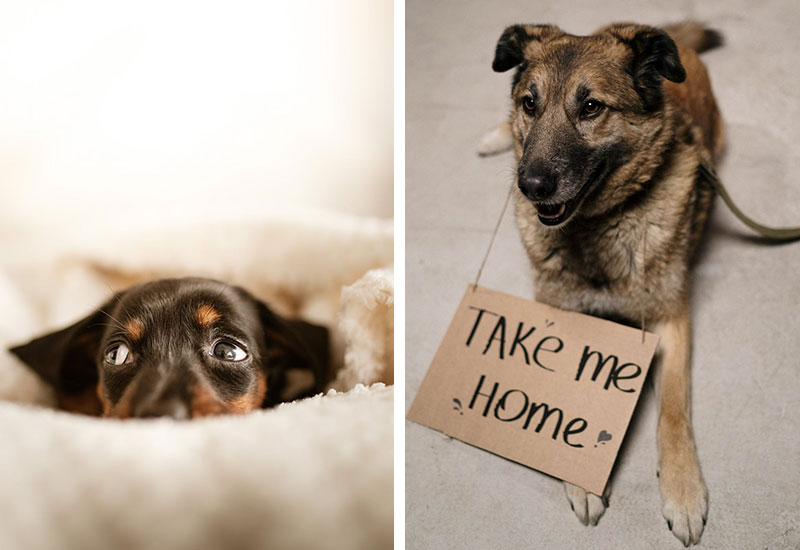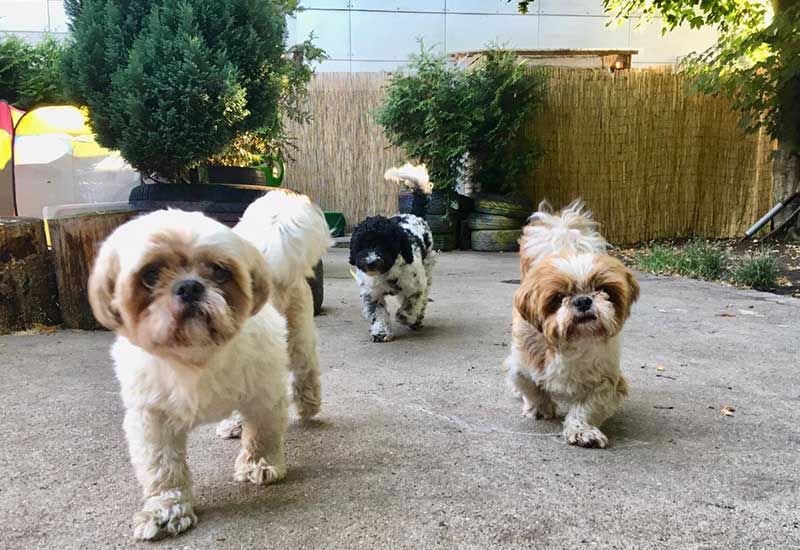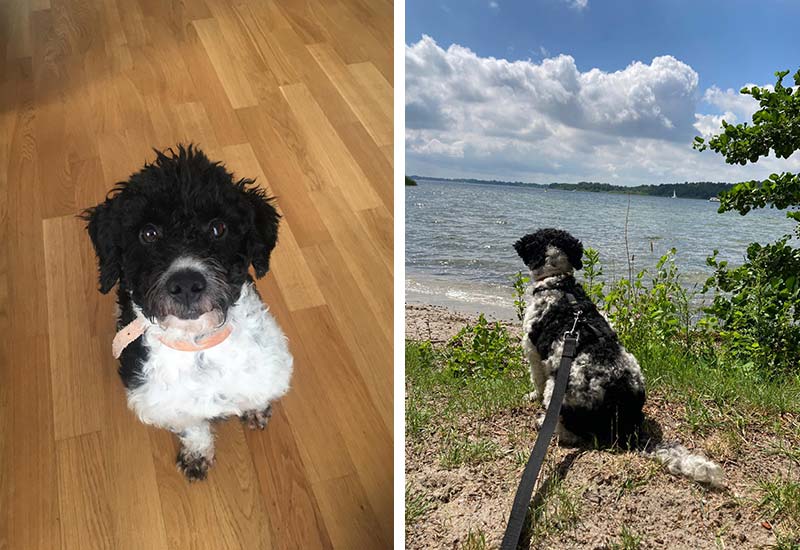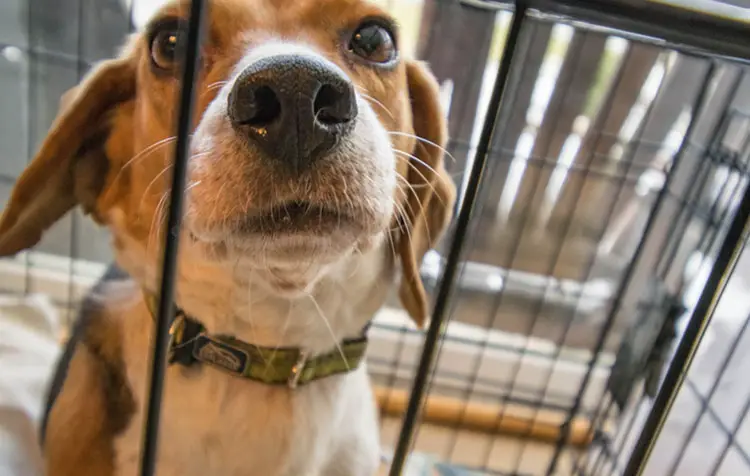You want to adopt a dog from the animal protection or get it from the shelter? Then you just have a great attitude, which I am very happy about. The rampant breeding is considered one of the main reasons why there are so many stray dogs on the streets. Accordingly, the solution to this problem is not to buy more breeding animals, but to rescue homeless four-legged friends and give them a new home.
We have also taken a small poodle lady from Romania with us. In this article I would like to share my experiences, tips and learnings with the adoption of a dog from the animal welfare - from the requirements to the process to the education tips - with you. Let's go!
In advance you can find here already a short Overview about the contribution:
Specifics - What behaviors can be expected in a dog from a shelter?

Dogs from animal welfare bring a (often traumatic) history with thembefore they step over the threshold of your safe four walls for the first time. They usually have not formed a close bond with humans and therefore initially have difficulty trusting their new owner. However, some have simply been abandoned and are therefore not as pre-stressed as, for example, dogs that have been cruelty to animals have experienced. Others are former Chained, hunting or street dogs. Whether they are fearful, nervous, confused, aggressive, or just extremely reluctant to be left alone, in the end their history determines what behaviors they initially exhibit.
When you adopt a dog from a shelter, the caretakers will already give you a lot of important information (e.g. castration, experiences, vaccinations) and advice about him with the hand, so that you do not start at absolute zero. But a realistic expectation helps to ideally adjust to the responsibility for the dog with a second chance.
Making people aware of advantages: You give the four-legged friend a new, safe life - and avoid buying from dubious breeders. In addition, animals from the street are much more robust and not as susceptible to diseases - the purchase is also much cheaper.
Requirements - Who can adopt a dog?
More and more often second-hand dogs are mediated - but they are not suitable for everyone because of their mentioned peculiarities. After all, it is a sentient beingthat you can not simply return and exchange like an object.
In order to avoid such problematic situations, you should always check your own Question motivation for adoption and check if the animal fits to the own life situation and planning both in the short and long term.
Here are some questions to help with the assessment:
- What has the dog experienced?
- What should your dog be like?
- Do you have time for daily walks?
- What are your working hours? Are you often at home?
- Who will take care of the dog when you are on vacation?
- Are dogs even allowed in your apartment?
- Are you able to pay for possible veterinary expenses?
- Do you have other dogs or children of your own in the household?
- Are you ready to take him to dog school?
- …
Responsible animal welfare organizations fortunately ask you such questions instead of just randomly giving dogs into other people's hands. For each animal must be evaluated individuallywhether it is a good match for its potential new owner. Dogs with a difficult history and post-traumatic behavior, for example, are specifically placed with experienced dog owners.
Procedure - How do you actually adopt a dog from animal welfare?
From my own experience, I can still describe the process of mediation pretty accurately. First of all it is necessary to find a trustworthy Animal welfare organization to find people who place "dogs with a story". We found our Sissi in a Facebook group for homeless poodles and the advertising Organization then put through its paces. Reviews of other dog lovers and of course personal preliminary discussions by phone helped immensely.
At a first meeting we could then get rid of all open questions and get to know Sissi. At the same time we are the typical questions gone throughwhich all dog owners should ask themselves. Also at our home we got laudable visit from the organizers. The result? Dog and potential owner were a very good match. Accordingly, an animal protection contract was concluded with details of the dog and the accompanying responsibility.
After we made all the preparations (including dog food, bowls, adjustable collar, secure harness, good dog drinking bottle and comfortable dog bed) for the reception had met, Sissi could then slowly get used to their new home. During this phase, we have seen them at Tasso e.V. registered.
Here is the general placement process again in a simplified overview:
- Select animal welfare organization
- Find a suitable dog
- Conduct personal discussions with responsible persons
- Conclude animal welfare contract
- Make preparations and make handover
- Allow acclimation period in the new home
- Registration of the dog
Cost - How much does it cost to adopt a homeless dog?
In principle, for the admission of a dog from the animal protection with a nominal fee from 200 to 300 euros calculate. The animal welfare organization has checked us as new owners so incredibly thoroughly and still looked after Sissi for a few days for logistical reasons, so that this amount was more than justified.
However, you should also be aware that a dog brings ongoing costs. From Dog food, about the Equipment and Vet visits, up to the Dog taxThe amount depends on the place of residence. Accordingly, you should take this knowledge into account in your final decision for a dog.
Acclimatization - How does a dog acclimatize as quickly as possible?

As a rule, as a new dog owner, you want to make sure that your four-legged friend feels comfortable right from the start. On the first few days, you should therefore above all Calm, serenity, understanding and Rules give. Through appropriate, recurring rituals and an orderly daily routine, you build habits that dogs crave in order to gain security. These can be sounds in the environment, the food itself, but of course also the gradually rehearsed sleeping, feeding and walking times.
Immediately after arrival, you should introduce your dog to every corner of your new home - from the apartment to the garden. Also wait a few days with visits from family and friends, so as not to overwhelm the pelt-nose. Increase the stimuli (e.g., walks, background music, or interactions with other dogs and people). very slowlyso that the acclimatization period is as gentle as possible.
Tips from my own experience - What do I need to consider?
Basically: Each animal is individual! Therefore, be sure to discuss with those in charge how you can make your dog's arrival and life in the new home as comfortable as possible.
Nevertheless I would like to give you here some more Advice from own experience with the adoption of animal welfare dogs along the way:
- Listen carefully to your dog's signals: For example, Sissi already cried when we were only 2 minutes outside the apartment. This was shown by the recorded voice memos. Accordingly, we have steadily increased the "stay alone times", starting with 5 seconds. Today she can stay alone for more than 5 hours without any problems.
- Attends a dog training school: If you adopt a dog from animal welfare, there is no alternative to train it well and for example leash leadership, housetraining and the recall. In the end, not only Sissi and her classmates, but also we as owners, have learned a lot in the dog school.
- Take time for your animal: Keeping a dog is not only tremendous fun, but also tremendous responsibility. So take time for grooming, playing, social interaction with other dogs, and - in general - your four-legged friend's concerns. Over time, you'll get used to each other - and find a new partner for life.
Book Tip: We got an incredible amount out of the book "The Second Chance - Dogs with a Past". taken away. You can get the book here*.
Adopt dog from animal shelter: A wonderful deed!

Not every breeding is bad. But by every purchase of a bred dog definitely another dog has to stay on the street or in the shelter - and by the increased demand for breeding animals, more street dogs will be added. If you have the chance and the will to adopt a dog from the animal protection, then you should do it - and give the animal a second chance in life.
In conclusion I have some further articles ready:
I hope I was able to help you out with this post about adopting a dog from a shelter or animal shelter. Either way, it's great that you found this good deed you are considering.
Do you have any questions, tips or suggestions - perhaps based on your own experience? Then I look forward to your comment!
Be always kind to animals,

PS: You want to know more? Then look now directly at the contribution about Sustainability with pets on. Have fun!





